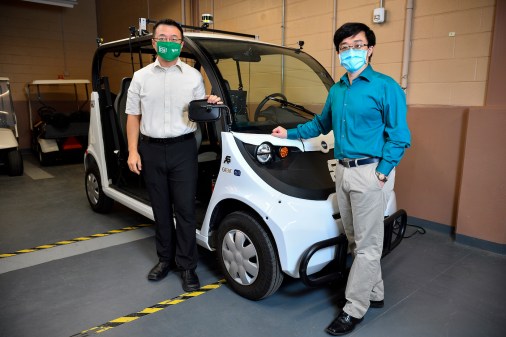Trump administration expected to nix vehicle-to-vehicle communications mandate

An expected decision by the Trump administration not to pursue an Obama-era vehicle-to-vehicle (V2V) communications mandate isn’t necessarily a step back, but may simply indicate a change in direction for the next generation of transportation technology.
The proposal put forth by the Obama administration in December would have required by 2023 all new cars and light trucks to come equipped with technology allowing communication of between vehicles that includes data like location, speed, direction and more, transmitted up to 10 times per second. Some estimates placed the regulatory cost of the program at $108 billion by 2060, which would have made it the second-most expensive regulation invoked in more than a decade.
The Associated Press reported Wednesday that Trump is now quietly backing away from the proposal, despite estimates that the technology could reduce the severity of up to 80 percent of collisions not involving drugs or alcohol.
And while some, like National Safety Council President Deborah Hersman, lament a likely policy reversal on one of the “most important tools” for improving roadway safety, the decision may be more attuned with legislatures and commercial markets that are focused on bringing autonomous vehicles to the masses.
The White House has not commented on the proposal, but the White House Office of Management and Budget moved it from its list of items under active consideration to its long-term agenda. The National Highway Traffic Safety Administration says the agency is now reviewing more than 460 comments on the proposal before determining next steps, but dropping the proposal from the immediate agenda matches the administration’s tendency to reduce government regulations with an eye on bolstering the economy.
Although most automakers support V2V technology, others, like The Competitive Enterprise Institute lauded the administration’s decision, noting that “this rule would have imposed large public infrastructure costs, in addition to the substantial costs on every American who purchased a new automobile.”
And while V2V has for years been proposed as a means to reduce the growing number of traffic fatalities — there were 37,461 in 2016, up almost 5,000 since 2014 — the Trump administration is simultaneously loosening regulations on the autonomous vehicle industry, also believed to be a technology that could someday outright eliminate traffic collisions.
Jesse Berst, founder of the Smart Cities Council, said the administration’s decision would be a recognition that the next generation of vehicles will work “a little differently” than originally conceived.
“Connecting vehicles to each other and even connecting vehicles to infrastructure, in my view, needs to be supplemental to full autonomous driving,” Berst said.
V2V was originally envisioned as the centerpiece in the future of transportation, Berst said, but today the concept has transitioned to be considered a secondary safety measure, as autonomous vehicles approach the marketplace.
The SELF DRIVE Act, which is moving easily through Congress, will allow up to 100,000 autonomous vehicles onto the roads within the first three years of its passage, and as U.S. Transportation Secretary Elaine Chao relaxes safety reporting requirements and encourages states to review their traffic laws and regulations to ensure compatibility with autonomous technology. The California Department of Motor Vehicles is among the leaders, targeting June 2018 for its pending autonomous vehicle regulations to become effective.
Where connected infrastructure and vehicle-to-vehicle technology is being developed and adopted by government, primarily on tollways, it is often viewed as a promising stopgap until fully autonomous vehicles arrive. The Ohio Turnpike and Infrastructure Commission is among those testing the technology, equipping 38 maintenance vehicles with sensors and running tests on a 60-mile stretch of its public roads with the goal of going live in early 2018.
Other government bodies, like the Harris County Toll Road Authority in Houston, aren’t pursuing V2V or autonomous vehicle technology at all, preferring instead to allow the private market adopt to the roadways, rather than the other way around.






